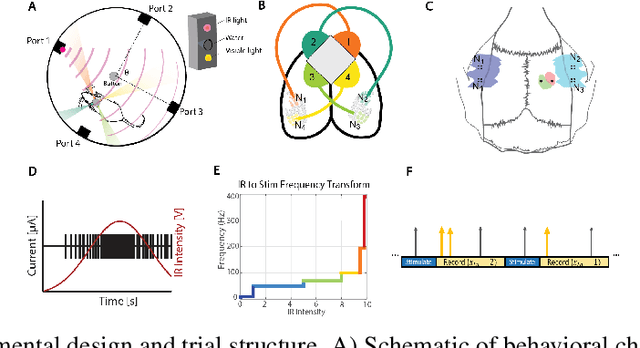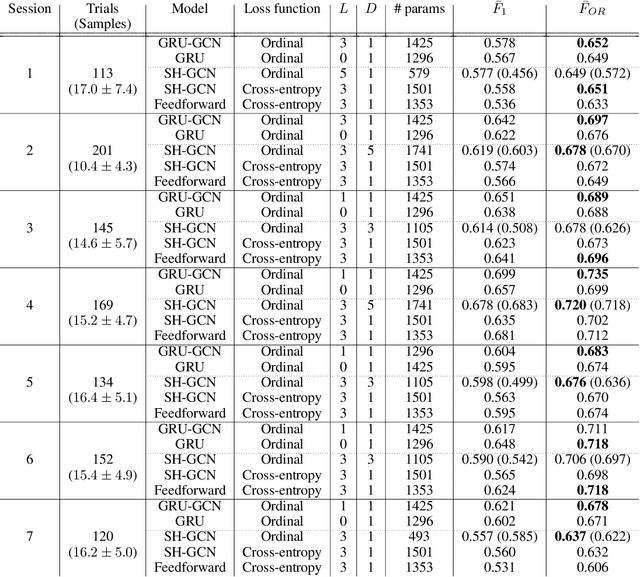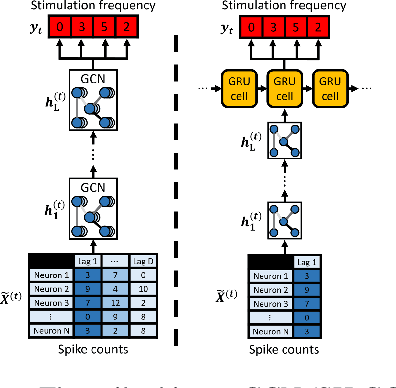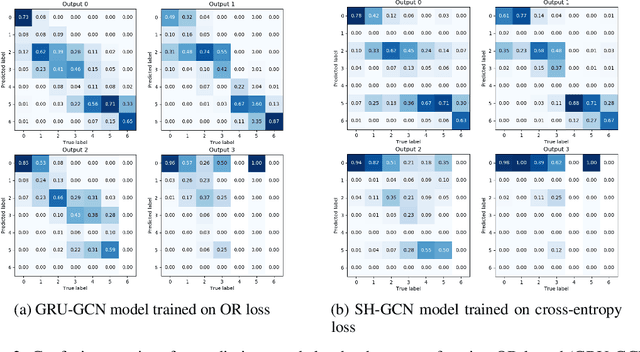Joshua Khani
Graph Convolutional Networks Reveal Neural Connections Encoding Prosthetic Sensation
Aug 23, 2020



Abstract:Extracting stimulus features from neuronal ensembles is of great interest to the development of neuroprosthetics that project sensory information directly to the brain via electrical stimulation. Machine learning strategies that optimize stimulation parameters as the subject learns to interpret the artificial input could improve device efficacy, increase prosthetic performance, ensure stability of evoked sensations, and improve power consumption by eliminating extraneous input. Recent advances extending deep learning techniques to non-Euclidean graph data provide a novel approach to interpreting neuronal spiking activity. For this study, we apply graph convolutional networks (GCNs) to infer the underlying functional relationship between neurons that are involved in the processing of artificial sensory information. Data was collected from a freely behaving rat using a four infrared (IR) sensor, ICMS-based neuroprosthesis to localize IR light sources. We use GCNs to predict the stimulation frequency across four stimulating channels in the prosthesis, which encode relative distance and directional information to an IR-emitting reward port. Our GCN model is able to achieve a peak performance of 73.5% on a modified ordinal regression performance metric in a multiclass classification problem consisting of 7 classes, where chance is 14.3%. Additionally, the inferred adjacency matrix provides a adequate representation of the underlying neural circuitry encoding the artificial sensation.
 Add to Chrome
Add to Chrome Add to Firefox
Add to Firefox Add to Edge
Add to Edge